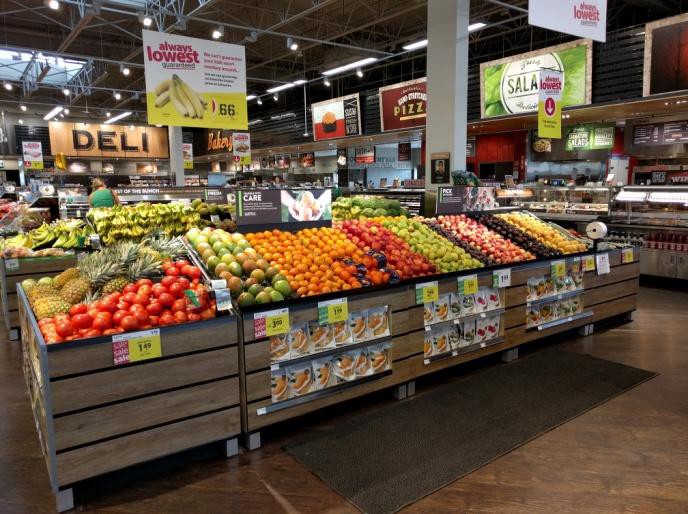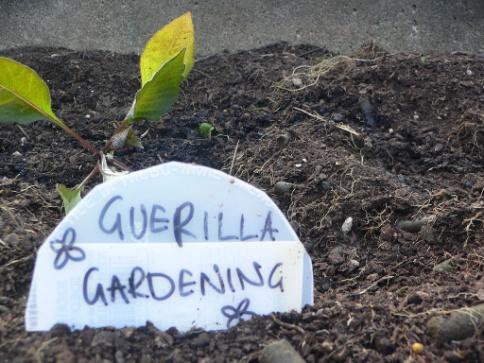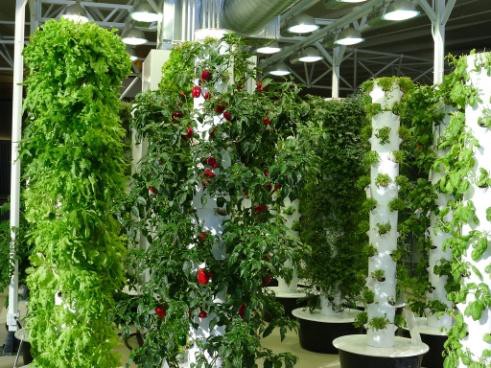4 min read
Written by Alex Glaros
Combing the produce aisles at a supermarket in the dead of winter, it is hard not to marvel at the array of fruits and vegetables displayed before us. Hundreds of pounds of fresh produce transported from all over the world, right here at an affordable price. Many of these goods have travelled and seen more of the world than some people have in their lifetime! The possibility of being without fresh, affordable food in January rarely crosses our mind nor troubles our wallets.
Sometimes, however, this confidence in our food system falters. The price of a half pint of blueberries skyrockets in the winter. News headlines read that the price of bread has been fixed, while there are food riots and famine across the globe. It is clear that a multitude of factors, near and far, impact the price, quality and quantity of food that reaches our supermarket shelves. In other words, many (if not most) of the food products we see at supermarkets are embedded within a global system that relies on a massive amount of energy (e.g. fossil fuels), actors (e.g. producers, distributors, wholesalers, retailers) and logistics, to bring it to somewhere like Waterloo at an affordable price.

The food system sounds rather complicated, right? To be more technical, researchers are arguing that the food system is not complicated, but complex. Unlike a complicated system, a complex system is something that is impossible to understand if examining its different parts in isolation. It is also impossible to predict how it will function in the long term. For example, the weather is a complex system. It may be predictable for tomorrow, or maybe next week, but beyond a few weeks we can only make educated guesses. Some complex systems are also adaptive, remembering and responding to their external environment, like economies.
There is not enough space available in this post to delve into the nitty-gritty of complexity theory. For a more in-depth explanation of complex systems, there is a great article published by Professor Homer-Dixon from the Balsillie School of International Affairs that you can find here.
That being said, there are three terrifying (and exciting) implications to looking at food systems through a complexity theory lens.
1) Systems Collapse and Reorganize
A branch of complexity theory called resilience-thinking, informed by the study of forest and lake ecosystems, suggests that as a system matures it becomes increasingly homogenous, interconnected and vulnerable to external disturbances. At a certain point it ‘tips’ and rapidly organizes into a new state. For these reasons, recent research argues that the global food system is becoming increasingly vulnerable to threats like climate change, political conflict and economic challenges. Decreases in crop diversity (e.g. species) and function (e.g. growing only grains, as opposed to a mix of grains, legumes and forage crops); the increasing power of large-scale food production and retailing giants; and greater reliance on a smaller number of hubs of production, distribution and retailing, all contribute to this increased vulnerability (Rotz & Fraser, 2015). Of course, the robust global networks that provide Waterloo with fresh fruit in January aren’t going to collapse this year, or maybe even any time soon. However, the complexity of this system requires that we question its characteristics and outcomes.
2) We Can Build Resilience into Food Systems
There is good news! We can consciously design resilient food systems. Unsurprisingly, this can be accomplished through counteracting those forces described above. For example, if a pest is introduced into a multi-species and multi-functional agricultural landscape, one or more crops may be able to survive. Similarly, if we receive our food through a decentralized production and distribution system, we do not have to worry if one producer or retailer cannot provide in a given season. The methods to build resilience are many and specific to local socio-ecological contexts.
3) Innovative Practices Can Propagate across All Levels of a System
Knowing their weaknesses, how do we compete with dominant food system models? There are countless alternative food production, distribution and retailing systems that are developing, already emerged, or yet to be invented that may be more resilient in certain ways than conventional methods. Examples include farmer’s markets, community-shared agriculture programs, guerrilla gardening, vertical farming, and many more. These novel strategies are actively challenging the dominant food production, distribution and retailing models. Given the right social, economic or environmental conditions, they may scale-up to become mainstream, not alternative, food systems.


Complexity science is but one tool to examine our food production, distribution and retailing structure. However, as we work to consider food-related concerns for ecology, social justice, equity and resilience, we must look at the bigger picture. This includes recognizing that there is a system, comprised of energy, people and the environment, that is involved in bringing food to our tables. Solutions that we consider may not be appropriate or effective in different instances, and across different scales. Complexity theory is a useful framework to understand these challenges, and to attempt to transform food systems for the better.
Work Cited:
Rotz, S., & Fraser, E. D. (2015). Resilience and the Industrial Food System: Analyzing the impacts of agricultural industrialization on food system vulnerability. Journal of Environmental Studies and Sciences, 5(3), 459–473.
